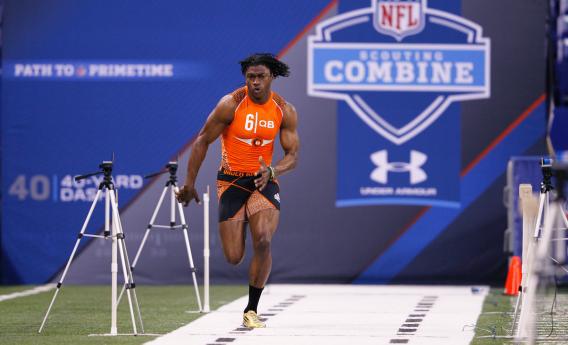The Washington Redskins today announced that they’re trading their first- and second-round picks in this year’s draft plus two future first-round picks in order to get the second overall pick in the draft. That pick will almost certainly be Heisman Trophy winner Robert Griffin III, and the trade is almost certainly a fiasco for reasons explicated in Cade Massey and Richard Thaler’s paper “The Loser’s Curse, Overconfidence vs. Market Efficiency in the NFL Draft” [SEE CORRECTION BELOW].
The key to understanding why this is such a bad deal is to go back to the fundamental economic structure of the NFL. An NFL team’s roster is built around the basic reality of the salary cap. Even hiring the best player in the league in a competitive auction can wind up being a bad idea because of the cap implications. But a secondary issue is that the teams have ganged up with one another and with a labor union representing the interests of veteran players to form a rookie-screwing cartel. If you’re a rookie, you don’t get to auction your services to the highest bidder. You need to play for the team that drafted you, and you need to play for a submarket salary. What’s more, the submarket salary you get is a function of your draft position. This means that hiring a slightly below-average player with a sixth-round draft pick is a great deal, while hiring a slightly below-average player with a first-round draft pick is a much worse value proposition thanks to his higher salary. Long story short, since a football roster needs to be filled out with a lot of guys, you can secure tons of value in the draft by hiring low-paid guys on rookie deals. It’s not all about stars.
This is the chart they made estimating the average quality of performance that teams find with different draft picks versus the wages they earn:
The key findings here are as follows. Any pick gets you, on average, an underpaid player. The top draft picks are, on average, better than the picks in the lower rounds. But the very first few picks and then the picks from the back half of the draft are the least underpaid. Late-first-round and second-round picks get you the most value. Long story short, it’s not totally clear that swapping the sixth pick for the second pick straight-up would have been a good deal for the Redskins. Throwing in the second-round pick turns it into a disaster for a bad team with plenty of needs. And giving up additional future first-round picks only makes it look worse. The problem teams make is essentially of overrating their own scouting abilities. A perfect talent evaluator might do better always using the top picks. But in the real world, loading up on second- and third-round guys and then just keeping the ones who turn out to play well is a smarter strategy.
CORRECTION: As several readers have pointed out, the Massey/Thaler analysis was conducted before the new collective bargaining agreement which altered the rookie scale and has likely eliminated the anomaly whereby the No. 2 pick is a worse value that the No. 6 pick or a second rounder. But I believe the overall point still applies. Given the underpayment of rookies, the No. 6 pick plus a second rounder is almost certainly more valuable than the No. 2 pick. And then you have to throw in the future first rounders. The point is still that when you consider uncertainty and the high value of guys on rookie contracts, this kind of “trading up” rarely makes sense.
